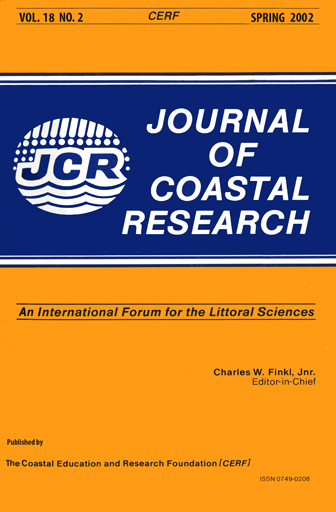Ground-Penetrating Radar Investigation of a Late Holocene Spit Complex: Cape Henlopen, Delaware
Keywords:
Spit, spit platform, cuspate foreland, stratigraphy, Holocene, sea levelAbstract
Understanding the development of coastal landforms is essential for evaluating and predicting the effect of sea-level change on shoreline evolution. Capes and spit complexes, as constructional feature s, are especially sensitive to changes in sea level, sediment supply, antecedent topography, and wind and wave environments. Cape Henlopen, on the southeastern margin of Delaware Bay, has evolved from a recurved spit complex, to a cuspate foreland, and finally to a simple spit. High-resolution digital ground-penetrating radar (GPR) surveys of this late Holocene cape complex reveal both similarities and differences in the internal stratigraphy of each shoreline morphology. Two radar facies identified in the recurved spit and cuspate foreland morphologies represent: (1) a subtidal spit-platform facies; and (2) an inter- to supratidal beach and dune facies. The interface between these two facies is distinct in GPR profiles, but is not always found at a depth predicted by models of spit evolution. In the Cape Henlopen system, the depth of this surface increases from 2 m below MSL in the older recurved spits to 4 m below MSL in the younger cuspate foreland. Local relative sea level has risen 2 m between 2000 yr BP, when the oldest relict spits developed, and the present. As predicted by a physical model of spit development (MEISTRELL, 1966), the depth of the boundary between the spit platform and intertidal facies would be expected to follow the trend of sea level. This discrepancy indicates that the spit-complex morphostratigraphy is responding to deepening bathymetry controlled by antecedent topography and changes in wave energy, as well as sea-level rise.


